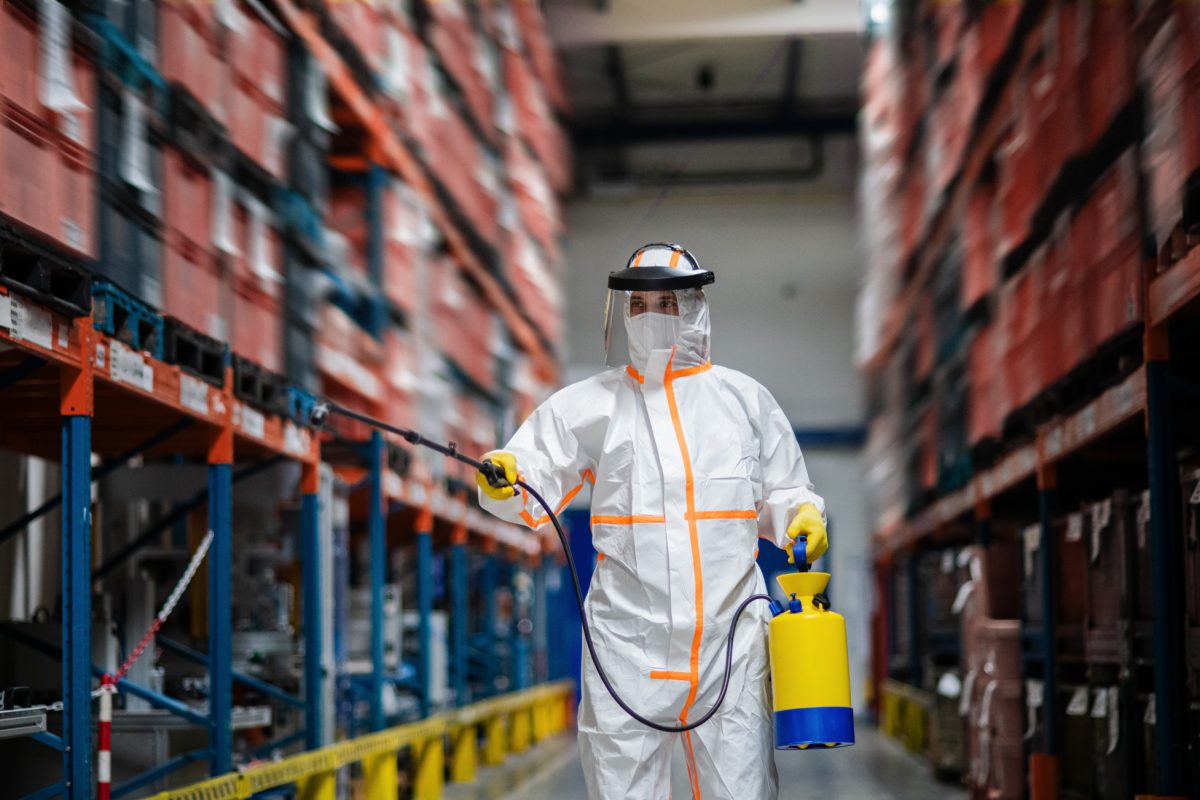When people think about the economy, they usually concentrate on the most visible parts. This would include the places in which you do business regularly, but there is also a hidden side. Without a complex network of warehouses, most of these businesses would not be able to operate efficiently. Unfortunately, these businesses cannot afford to shut down due to the Covid-19 pandemic, as they represent the lifeblood of the economy. As such, the only thing that warehouse managers can do is to adopt the best possible practices for sanitation and disease prevention.
The WERC Guidelines
Thankfully, some of the relevant authorities have been working on a set of guidelines that will help warehouse managers during this difficult time. For our purposes, we will first look at some recommendations published by the WERC (Warehousing Education and Research Council). Last March, they held a panel discussion with industry representatives to address the coronavirus issue, and many helpful ideas were exchanged. We would recommend reading the report (linked above) in its entirety.
Evaluate Your Risk And Make Plans
WERC recommends that you take a preventative approach in dealing with this issue, instead of waiting until the cows get out of the barn (as they put it). This should include a risk management meeting in which all the relevant factors are discussed and a plan of action is made. The subjects discussed should include:
- Coordination with the policies of all suppliers
- Addressing the concerns of customers
- Alternative sources and other contingency plans
- Dealing with any excesses or deficiencies in your staffing
- A comprehensive disaster response/management plan
Employee Concerns
Even if your warehouse doesn’t pose a high risk of spreading Corona, many of your workers are likely to be concerned about its effects. It is important to let them know that their concerns are being addressed, and many will appreciate lots of specific information. Thus, in order to avoid a feeling of panic or despair among your employees, you should try to answer all of their questions and address their concerns to the maximum extent possible.
If your employees need to travel, you might want to issue them an “essential service” letter, which should allow them to avoid most quarantine restrictions. If you have no idea about how to do this, you can view a sample of such a letter here.
Operations
WERC recommends that you streamline your operations in the event that you see a downturn. Rather than eliminating jobs, you can reduce working hours. Yes, people will be unhappy with this, but it’s a lot better than being laid off! If your business is one of those that has seen an increase, WERC cautions against overworking your people. Overworked individuals are more likely to quit and more likely to get sick.
The report also recommends good communication standards to make sure that everyone is working together as a unified front. These updates should include management, staff, customers, and suppliers, and should be regularly updated. In addition, the following rules (among others) are recommended:
- Requirements for regular hand-washing
- PPE requirements (masks, gloves, shoe covers, etc.)
- Proper use of social distancing
- Frequent disinfection of heavily used areas, including an end-of-shift wipedown
- Control access to the manufacturing facility- Only management and workers allowed
- Use temperature checks when warranted or necessary
The CDC Guidelines
While our first source of information came from a private industry organization, this one comes from the government. We felt it was a good idea to provide both private-sector and public-sector solutions, as these two groups often have very different perspectives and practices. With that in mind, let’s look at the recommendations published by the CDC (Centers for Disease Control).
The Basics
The CDC guidelines are a little bit more simple and straightforward. Rather than focusing on policies, this report is focused on proper disinfecting procedures. Of course, that is a very important factor, so we can’t disagree with this emphasis. Disposable gloves and masks are recommended whenever cleaning, and they also recommend a mixture of soap and stronger disinfectants. The soap is used first, and a disinfectant wipe-down follows.
Know Where To Clean Most
Like the WERC report, this one recommends frequent cleaning of the areas that are most frequently touched by employees. These include:
- Light switches
- Tables
- Keypads/keyboards
- Doorknobs
- Shopping carts
- Desks
- Phones
- Countertops
- Handles
- All bathroom fixtures
Choosing The Right Disinfectant
The CDC recommends the use of disinfectants that are approved by the EPA. This is meant not only to protect the environment but also to protect you against exposure to dangerous chemicals. If you are feeling confused, you can visit this EPA page to see which cleaning products have been approved for use against Covid-19. Regardless of which ones you choose, it is vitally important to follow all instructions on the label.
Based on the information presented here, it looks as if the two most effective disinfectant solutions are bleach/water and alcohol. For the first option, the CDC recommends a ratio of 5 tablespoons of bleach to 1 gallon of water. For alcohol, purity is the most important factor. In order to be effective, it needs to be at least 70% pure, so standard isopropyl might not do the job.
The purest alcohol is more effective because it evaporates quickly and kills germs more effectively. If need be, you can actually purify your weak alcohol by mixing it with inexpensive non-iodized salt. This will form two distinct layers, one of which will consist of 99% pure alcohol.
Conclusion
Obviously, these are just guideposts that are intended to help you manage your warehouse safely and more effectively. Things are neither simple nor easy at the moment, but we hope that our work will enable you to weather the storm with as few problems as possible. If so, please feel free to fill out the contact form below.







